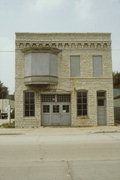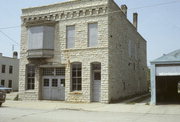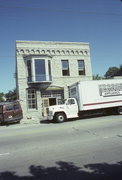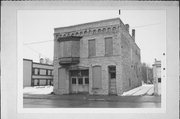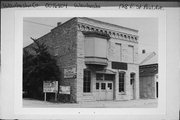| Additional Information: | The blacksmith shop is a free standing, two story structure composed of the local dolomitic stone. The side and rear walls of the building are rubble stone; contrasting with this is a facade of stone dressed as rock faced blocks, laid in regular courses. A band of corbelled stone, suggesting dentils, decorates the cornice. Segmental arches cover the fenestration of the facade which consists of two elongated windows flanking the service entrance, and an entrance which led to the upper story. Two windows on the second story of the facade are covered by simple lintels, west of this is a frame oriel window (these windows have been covered with frame panels).
The finest remaining example of the numerous blacksmith shops which once formed a vital part of Waukesha's 19th century industrial economy (and the best preserved light industrial structure of any kind from that period), the Pokrandt Blacksmith Shop is historically significant for its association with a major element of the city's industrial heritage. Small blacksmith shops like this - making as well as repairing wagons, buggies, and sleighs, and shoeing horses - were pivotal to the community's economy from its inception, providing essential services to both a growing urban population and to the agricultural hinterland. Some shops, such as Winchell Bacon's shop of 1845 (now demolished) evolved into machine shops and foundries and formed th nucleus of the city' s later industrial base. Others, like the Pokrandt shop, catered to the village's rapidly increasing population and the dramatic influx of tourists in the late 19th century. Built in the early 1890's by Gustave Pokrantd, the shop was a substantial, two-story operation located on a major traffic artery not far from the railroad depot. Unlike blacksmith shops in the more intensively developed central business district, by the 1920s, Pokrandt was servicing automobiles as well, thus successfully spanning two eras of transportation technology. Today, the shop continues in the same business at the same location, preserving the integrity of the structure architecturally and functionally. Although its longevity was unique, the Pokrandt shop itself was representative of many shops, and is more strongly associated with that significant theme because it has retained its integrity while other properties of the same associations have been universally altered beyond recognition or destroyed. As such, the Pokrandt Blacksmith Shop is the last true example of a prevalent industrial structure and a rare link with a significant part of the city's industrial past.
Locally designated in 1991, Landmark #19 |
|---|

